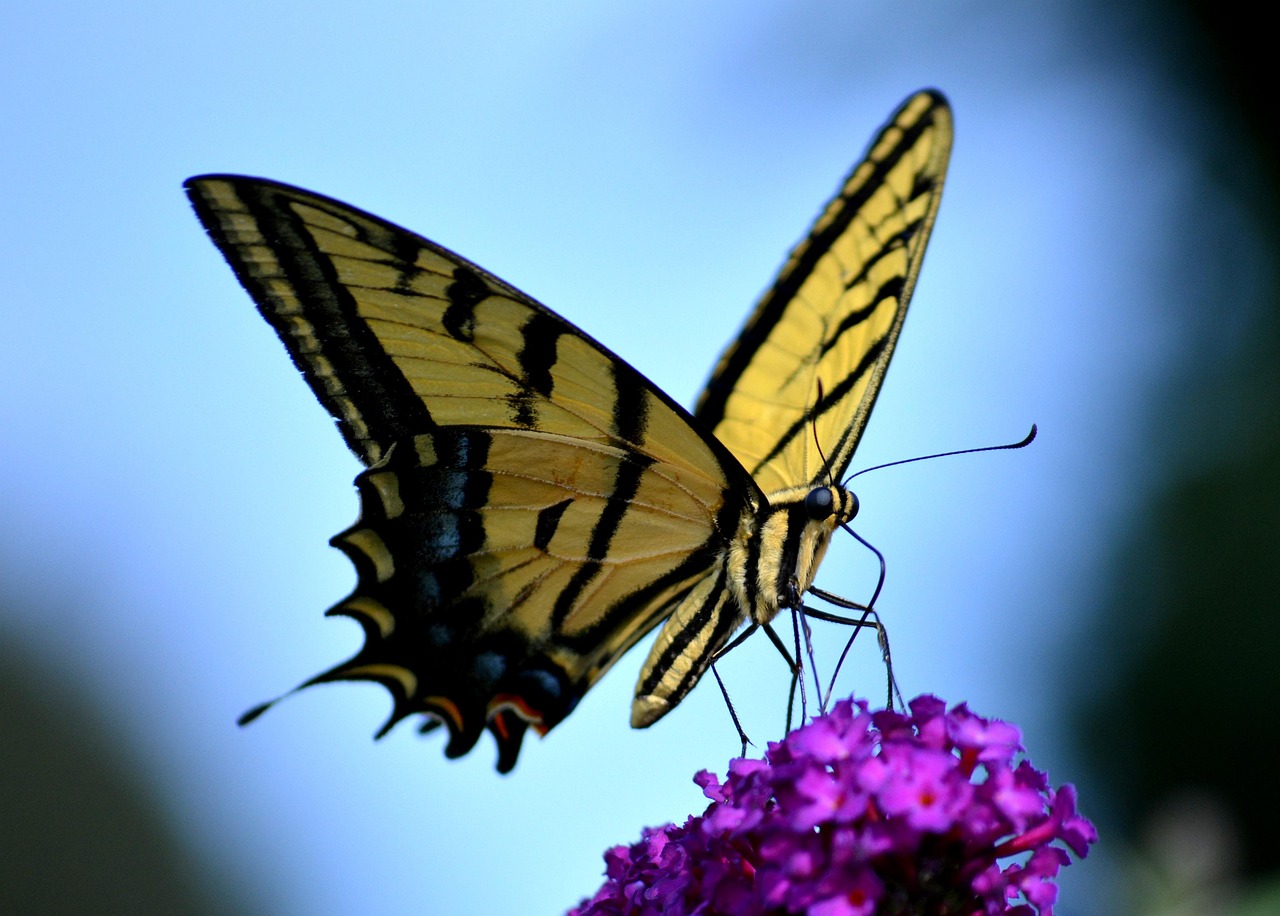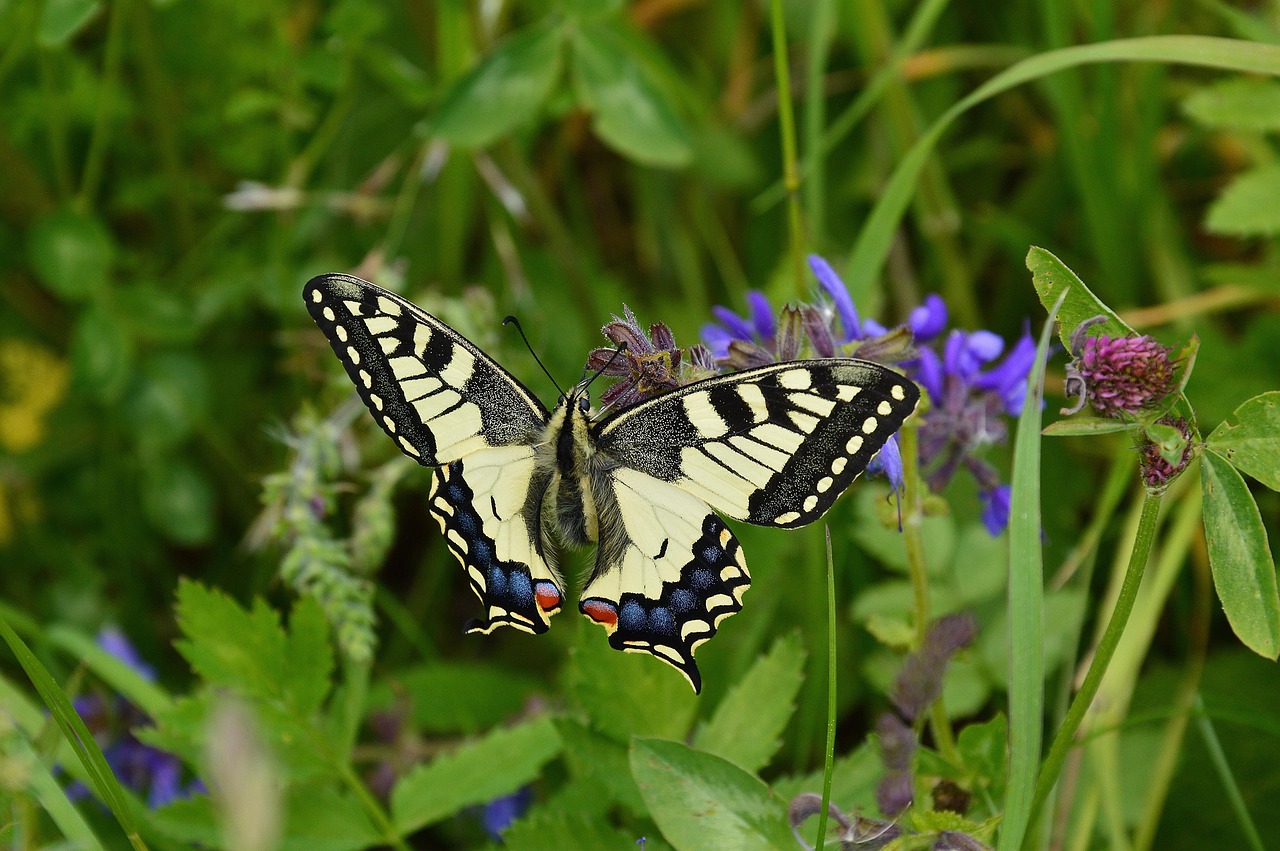The Tiger Swallowtail butterfly lays its eggs on specific host plants, primarily within the magnolia, willow, and fruit tree families. Key locations for egg-laying include gardens, parks, and forests across North America, particularly in areas rich in these plants.
Tiger Swallowtail Butterfly Overview

The Tiger Swallowtail butterfly, scientifically known as Papilio machaon, is one of North America’s most recognizable butterflies. With its striking yellow and black coloration, it easily captures the attention of nature enthusiasts and casual observers alike. These butterflies go through four life stages: egg, larva (caterpillar), pupa (chrysalis), and adult. Understanding their reproductive habits, especially egg-laying, is crucial for conservation efforts and gardening practices aimed at attracting these beautiful insects.
Importance of Host Plants
Host plants play a vital role in the life cycle of the Tiger Swallowtail. The adult females specifically seek out suitable plants to lay their eggs, as these plants serve as food sources for the hatching caterpillars. The health and availability of these host plants directly influence the population of Tiger Swallowtails in any given area.
Common Host Plants
The following table lists common host plants favored by the Tiger Swallowtail for egg-laying:
| Plant Family | Common Plants |
|---|---|
| Rutaceae | Citrus trees (e.g., orange, lemon) |
| Salicaceae | Willows and Poplars |
| Magnoliaceae | Magnolia trees |
| Rosaceae | Cherry and Peach trees |
These plants provide not only a place for the female butterflies to lay their eggs but also serve as a food source for the young caterpillars once they hatch. Each plant family offers distinct advantages that cater to the specific needs of the caterpillars during their growth stages.
Preferred Locations for Egg-Laying
Tiger Swallowtails are commonly found in various habitats. Their preferred locations for egg-laying include:
- Wooded areas with abundant trees
- Gardens that feature native host plants
- Parks with flowering plants and shrubs
- Riparian zones near rivers and streams
These environments not only provide shelter but also access to nectar-rich flowers for adult butterflies. Creating suitable habitats by planting native host plants can significantly enhance local populations of these beautiful butterflies.
Factors Influencing Egg-Laying Behavior
<p severally influences where Tiger Swallowtails choose to lay their eggs. Some key factors include:
- Availability of host plants
- Environmental conditions such as temperature and humidity
- Presence of predators or parasites
Understanding these factors can help conservationists and gardeners create environments that are more conducive to the survival of this species, ensuring that future generations of Tiger Swallowtails continue to grace our landscapes.
Life Cycle of the Tiger Swallowtail
The life cycle of the Tiger Swallowtail consists of four distinct stages: egg, larva (caterpillar), pupa (chrysalis), and adult. Each stage plays a crucial role in the development of the butterfly and is closely linked to the availability of suitable host plants.
Egg Stage
The female Tiger Swallowtail lays her eggs on the underside of leaves of host plants. This placement helps protect the eggs from predators and environmental factors. The eggs are small, usually pale yellow or green, and can be difficult to spot against the foliage.
Caterpillar Stage
Once the eggs hatch, the caterpillars emerge and begin to feed on the leaves of their host plants. The caterpillar stage is critical for growth and development. Here are some key characteristics of this stage:
- Color Variations: The caterpillars may vary in color from green to brown, allowing them to blend in with their surroundings.
- Defense Mechanisms: When threatened, caterpillars can mimic bird droppings or display eye spots to deter predators.
- Feeding Habits: Caterpillars require a significant amount of food to grow, often consuming large quantities of leaves.
Pupa (Chrysalis) Stage
After several weeks of feeding, the caterpillar will find a safe location to pupate. During this stage, it forms a chrysalis, where it undergoes metamorphosis. This transformation can take several days to weeks, depending on environmental conditions.
Optimal Conditions for Egg-Laying and Caterpillar Development
Creating optimal conditions is essential for successful egg-laying and caterpillar development. Several environmental factors can significantly influence these processes:
- Temperature: Warmer temperatures generally enhance the growth rate of both eggs and caterpillars.
- Humidity: High humidity levels can provide a more favorable environment for the survival of eggs and caterpillars.
- Plant Health: Healthy host plants are crucial for providing adequate nutrition to the developing caterpillars.
Choosing Host Plants Wisely
When selecting plants to attract Tiger Swallowtails to your garden or landscape, consider the following:
- Diversity: Incorporate a variety of host plants to support different life stages. This increases the likelihood of attracting adult butterflies.
- Natives vs. Non-native: Native plants are often more beneficial as they are adapted to local conditions and support local ecosystems.
- Flowering Plants: In addition to host plants, include nectar-rich flowering plants to provide food for adult butterflies.
Impact of Habitat Loss on Tiger Swallowtails
Habitat loss poses a significant threat to the survival of Tiger Swallowtail butterflies. Urbanization, agriculture, and deforestation have led to a decline in available host plants and suitable environments for egg-laying.
Conservation Efforts
To counteract these challenges, several conservation efforts can be implemented:
- Plant Native Species: Encourage communities to plant native host plants in gardens and public spaces.
- Create Butterfly Gardens: Establish designated areas that provide essential habitats for all life stages of butterflies.
- Educate the Public: Raise awareness about the importance of butterflies in ecosystems and promote responsible gardening practices.
By understanding the life cycle and habitat requirements of the Tiger Swallowtail, we can better protect these beautiful insects and ensure their continued presence in our environment.

Gardening for Tiger Swallowtails

Creating a garden that attracts Tiger Swallowtail butterflies can be a rewarding experience. With the right plants and conditions, you can provide a sanctuary for these beautiful insects throughout their life cycle. Here are some strategies for gardening effectively for Tiger Swallowtails.
Choosing the Right Plants
As mentioned previously, selecting the appropriate host plants is essential. In addition to host plants, incorporating various nectar-producing flowers will attract adult butterflies to your garden. Here are some suitable plants:
- Host Plants:
- Willow (Salix)
- Black Cherry (Prunus serotina)
- Magnolia (Magnolia)
- Peach trees (Prunus persica)
- Nectar Plants:
- Milkweed (Asclepias)
- Lantana (Lantana camara)
- Echinacea (Coneflower)
- Joe Pye Weed (Eutrochium purpureum)
By including both host and nectar plants, you create an ecosystem where all stages of the Tiger Swallowtail can thrive. This diversity also benefits other pollinators in your area.
Creating a Suitable Environment
Beyond plant selection, it’s essential to create a welcoming habitat for Tiger Swallowtails. Consider these environmental factors:
- Sunlight: Ensure your garden receives plenty of sunlight. Butterfly gardens should ideally have at least six hours of direct sunlight each day.
- Shelter: Incorporate shrubs and tall plants to provide shelter from strong winds and predators.
- Water Sources: Provide shallow water sources like birdbaths or small ponds. Butterflies often need to drink and bathe to maintain hydration and health.
Seasonal Considerations for Butterfly Gardens
Different seasons bring unique challenges and opportunities for maintaining a butterfly-friendly garden. Understanding these seasonal changes can help you prepare your garden effectively.
Spring Preparations
Spring is the time when Tiger Swallowtails begin to emerge from their winter dormancy. Here are some tips for spring gardening:
- Planting: Early spring is the best time to plant new host and nectar plants.
- Cleaning Up: Remove any dead plant material from the previous season to allow new growth.
- Mulching: Apply mulch around plants to retain moisture and suppress weeds.
Summer Care
During the summer months, attention should be focused on maintenance:
- Watering: Ensure that your plants receive adequate water, especially during dry spells.
- Pest Control: Monitor for pests but avoid using harsh chemicals that could harm butterflies.
- Nectar Availability: Regularly check flowering plants to ensure a continuous supply of nectar.
Autumn Cleanup
As autumn approaches, consider these steps to prepare your garden for winter:
- Seed Collection: Gather seeds from your flowering plants to propagate in the next growing season.
- Leave Debris: Leave some leaves and plant material on the ground as shelter for overwintering insects.
- Plan for Spring: Think ahead about what new plants you want to add for the upcoming spring season.
By understanding the needs of the Tiger Swallowtail throughout different seasons, you can create a thriving butterfly garden that supports these magnificent creatures year-round.
Challenges to Tiger Swallowtail Populations

Despite the efforts to create suitable habitats and support the Tiger Swallowtail populations, several challenges continue to threaten their existence. Awareness of these threats is essential for effective conservation strategies.
Climate Change
One of the most significant threats facing the Tiger Swallowtail is climate change. Rising temperatures can alter their natural habitats and the availability of host plants. As climate zones shift, some host plants may no longer thrive in their traditional locations, potentially reducing the butterfly’s breeding sites.
Pollution
Pollution, particularly pesticide use, poses a severe risk to butterfly populations. Many pesticides are harmful not only to pests but also to beneficial insects like the Tiger Swallowtail. It is crucial for gardeners and farmers to adopt organic practices to avoid contaminating the environment.
Habitat Fragmentation
As urban areas expand, natural habitats become fragmented. This fragmentation can isolate butterfly populations, making it difficult for them to find mates or new breeding sites. Maintaining connectivity between habitats is vital for the survival of these butterflies.
Community Involvement in Conservation
Community involvement plays a crucial role in the conservation of the Tiger Swallowtail butterfly. Engaging local communities can lead to more effective conservation efforts and a greater understanding of the importance of biodiversity.
Educational Programs
Schools and community organizations can implement educational programs focused on butterfly conservation. These programs can help teach individuals about the life cycle of butterflies, their ecological roles, and ways to support their populations through gardening and habitat preservation.
Citizen Science Initiatives
Citizen science projects allow community members to participate in monitoring butterfly populations. By reporting sightings and contributing data, individuals can help scientists track changes in populations and distribution patterns over time.
Local Conservation Groups
Joining or supporting local conservation groups can amplify efforts to protect habitats. These organizations often undertake initiatives such as habitat restoration, public outreach, and advocacy for policies that protect natural environments.
Final Thoughts
The Tiger Swallowtail butterfly is not only a beautiful insect but also a vital part of our ecosystems. Understanding their egg-laying host plants and preferred locations is essential for supporting their populations. By creating butterfly-friendly gardens, raising awareness about conservation challenges, and engaging in community efforts, we can contribute to the preservation of this magnificent species. Every action, no matter how small, can lead to significant improvements in habitat quality and butterfly survival rates.
As we learn more about the needs of the Tiger Swallowtail and other pollinators, we can foster landscapes that are rich in biodiversity. Protecting these butterflies ultimately benefits our environment, agriculture, and overall quality of life. Together, we can ensure that future generations will also have the chance to enjoy the sight of these stunning butterflies fluttering across our gardens and landscapes.
